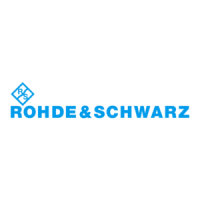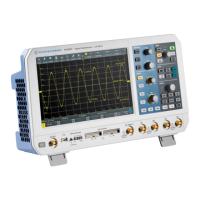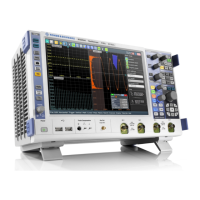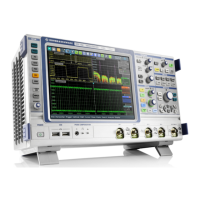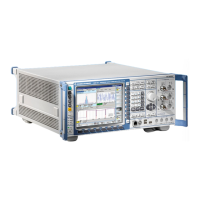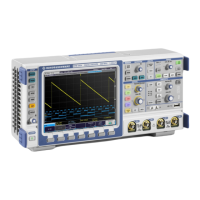Waveform Setup
R&S
®
Scope Rider RTH
39User Manual 1326.1578.02 ─ 12
3 Waveform Setup
3.1 Connecting Probes
Shock hazard caused by high voltages
Make sure to set the attenuation factor on the instrument according to the probe being
used. Otherwise, the measurement results do not reflect the actual voltage level, and
you might misjudge the actual risk.
Obtain best signal integrity
To get the most accurate waveform display and best measurement results, remove all
redundant connectors: power adapter, USB flash drive, DMM test leads and unused
channels.
1. Connect the probe(s) to the channel input(s) at the top of the instrument.
2. Press and hold the [CH] key of the used input.
3. Select "Probe Setting".
4. Select the attenuation factor of the probe:
● To set a common attenuation factor, select it on the list.
● To set a user-defined attenuation factor:
– Select "User".
– Set the "Probe Factor".
The probe's attenuation factor is indicated on the probe.
Note: If you measure current using a shunt resistor as a current sensor, you have
to multiply the V/A-value of the resistor by the attenuation of the probe. For exam-
ple, if a 1 Ω resistor and a 10:1 probe is used, the V/A-value of the resistor is 1 V/A,
the attenuation factor of the probe is 0.1, and the resulting current probe attenua-
tion is 100 mV/A.
Connecting Probes
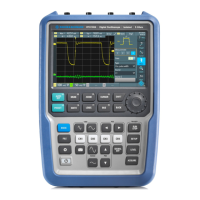
